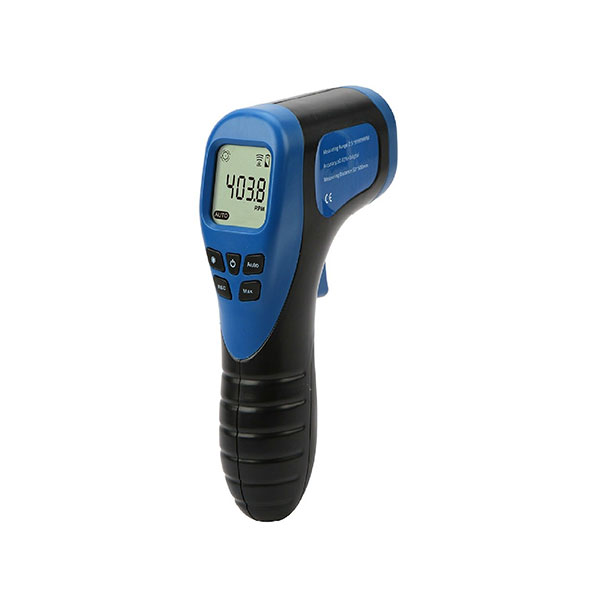Exploring the Functions and Advantages of a Tachometer: A Comprehensive Overview for Vehicle Lovers
In the realm of vehicle instrumentation, the tachometer stands as a necessary tool that uses vehicle drivers important understandings right into their lorry's efficiency. tachometer. From giving real-time information on engine rate to assisting in maximizing equipment changes, the tachometer offers as greater than just a dial on the dashboard. Its multifaceted features not only improve driving experience yet also play a critical function in preserving engine health and efficiency. As we explore the intricate functions and advantages of a tachometer, a much deeper understanding of its importance for car fanatics and specialists alike will unravel.
Understanding the Essentials of a Tachometer
In the world of auto instrumentation, comprehending the basics of a tachometer is crucial for any type of car lover looking to dive into the complexities of engine performance monitoring. A tachometer, commonly displayed on the dashboard of an automobile, measures the engine's revolutions per min (RPM)
Tachometers usually have actually a range marked in changes per minute, with a redline showing the maximum rate at which the engine can securely run (tachometer). This information is important for stopping engine damage and enhancing gear changing for manual transmissions. Furthermore, tachometers can help in identifying engine concerns such as misfires or a falling short ignition system by discovering irregular RPM analyses
Value of Checking Engine Speed

Keeping track of engine speed is a crucial aspect of vehicle upkeep and performance optimization for automotive fanatics and specialists alike. The engine speed, measured in changes per minute (RPM), indicates just how quickly the engine's crankshaft is revolving. By keeping a close eye on the RPM, drivers can ensure that the engine is operating within the optimal variety, avoiding potential damages from over-revving or stalling. Checking engine speed is particularly important throughout gear changes, as it aids chauffeurs determine the correct time to change equipments for smooth velocity and effective gas usage.
In addition, tracking engine rate can also offer useful insights right into the total health of the automobile. Uncommon changes in RPM might show issues such as a clogged air filter, fuel system problems, or even original site engine misfires. By detecting these abnormalities early via the tachometer readings, drivers can address prospective problems without delay, preventing extra severe damage and costly repair services down the line. Generally, monitoring engine speed with a tachometer is a fundamental practice that can improve driving efficiency, extend engine life, and guarantee a much safer and much more satisfying driving experience.
Enhancing Performance With Gear Shifts
Appropriate equipment moving ensures that the engine runs within its ideal power band, allowing for smooth velocity and improved gas economic climate. When moving equipments, it is vital to pay attention to the engine rate indicated on the tachometer.

To accomplish peak performance via gear changes, vehicle drivers should practice smooth and prompt transitions between equipments, matching engine rate with road rate to harness the complete potential of their car's powertrain.
Taking Full Advantage Of Performance With a Tachometer
Mastering the art of gear changing in high-performance automobiles not just boosts driving experience yet additionally plays an important role in maximizing efficiency with a tachometer. tachometer. By paying very close attention to the tachometer readings, drivers can optimize their equipment changes to operate within the engine's most reliable array. When increasing, changing equipments at the ideal RPM Bonuses indicated by the tachometer can avoid the engine from overworking or underperforming, resulting in improved gas performance and total efficiency
Furthermore, a tachometer assists chauffeurs avoid unnecessary revving, which not just loses fuel however likewise puts unneeded stress on the engine. Regularly keeping track of the tachometer while driving enables smoother equipment changes, minimizing deterioration on the transmission system over time.

Advanced Tips for Tachometer Application
To delve right into innovative pointers for tachometer application, take into consideration including the use of shift lights. Shift lights are visual indicators that brighten when it's time to change equipments based on engine transformations per minute (RPM), allowing for smooth equipment modifications without continuously keeping an eye on the tachometer. By fine-tuning shift points and setting warning thresholds, drivers can maximize acceleration and engine performance while decreasing the risk of over-revving.
Final Thought
Finally, the tachometer acts as a crucial device for automobile enthusiasts to monitor engine rate, improve performance via gear changes, and make the most of efficiency. By recognizing the functions and advantages of a tachometer, motorists can optimize their basics driving experience and lengthen the life expectancy of their vehicle. Using sophisticated pointers for tachometer use can further boost driving skills and general performance when driving.